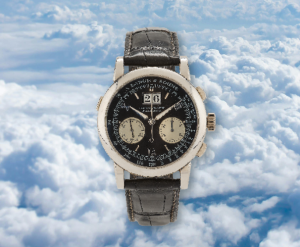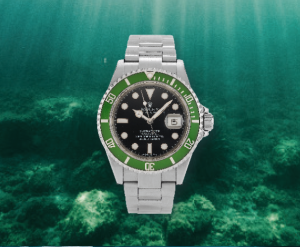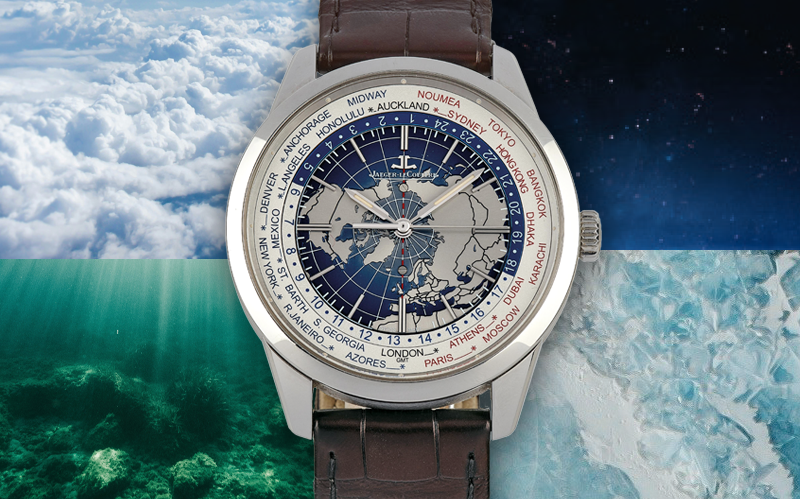
Wristwatches have long been more than just timepieces. They are reliable companions in extreme conditions, be it on the heights of Mount Everest, in the depths of the Mariana Trench, the vastness of space, or the icy cold of the Arctic.
Developments in watch technology were driven by the needs of explorers, researchers and adventurers who used watches in extreme environments. The requirements for waterproof cases, shock-resistant constructions and precise mechanisms increased steadily, and watch manufacturers responded with innovative solutions. Thus new standards were set in terms of robustness, reliability and performance.
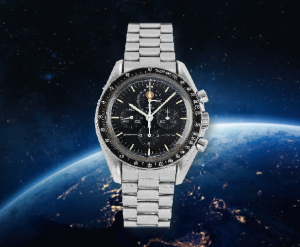
Reaching for the stars
Omega Speedmaster Professional
The history of the Omega Moonwatch began in the 1960s when NASA was looking for a reliable watch for its astronauts. After a demanding selection process, the Omega Speedmaster Professional was chosen as the official watch for the Apollo programme in 1965. The highlight in the history of the Omega Moonwatch was undoubtedly the Apollo 11 mission in 1969. When Buzz Aldrin and Neil Armstrong landed on the lunar surface, they were wearing Omega Speedmaster Professional wristwatches. Neil Armstrong left his in the lunar module because the onboard clock had stopped working. Buzz Aldrin‘s watch was therefore the first watch worn on the moon.
Free as a bird
Watches with special functions for pilots
The German watch manufacturer A. Lange & Söhne traditionally stands for high-quality mechanical watches. Its watches for air travel are less well known. Nevertheless, the manufacturer has developed an impressive collection that meets the needs of pilots. Thanks to the flyback mechanism of the A. Lange & Söhne Datograph, the chronograph can be reset by pressing a single button. This enables an immediate restart without interrupting the ongoing time measurement, allowing pilots to react quickly to successive flight segments. The flyback function is therefore particularly popular in pilot chronographs.
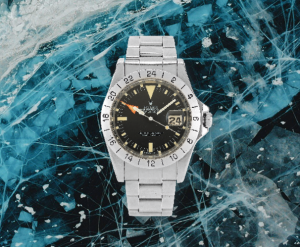
On the roof of the world
Rolex Oyster Perpetual “Explorer”
A watch was on the highest mountain in the world for the first time in 1953 as part of the legendary first ascent of Mount Everest by Sir Edmund Hillary and Tenzing Norgay. The expedition was led by Colonel John Hunt. Rolex played a crucial role in this historic event. Sir Edmund Hillary wore a Rolex Oyster Perpetual with the reference number 6098 during the summit climb on May 29, 1953. This watch was specially designed for extreme conditions and later became known under the model name “Explorer”.
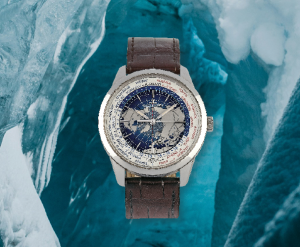
In perpetual ice
Jaeger-LeCoultre Geophysic
As well as models from Rolex, Omega and Sinn, the Jaeger-LeCoultre
Geophysic was worn by members of the British North Greenland expedition from 1952 to 1954 that was tasked with conducting scientific research in the northern parts of Greenland. These watches, designed with particular attention to the requirements of polar explorers, offer features such as extreme cold resistance, shock resistance, water resistance, and often special functions such as a compass or thermometer.
The deepest depths
Rolex DeepSea Special
The Rolex Deepsea Special is an outstanding example of a watch that meets the needs of divers in the extreme depths of the ocean. In 1960, Jacques Piccard dived 10,916 metres into the Mariana Trench on board the Trieste. The Rolex Deepsea Special mounted on the outside wall survived this deepsea journey unscathed. The construction of the case, the use of high-quality materials and the precision of the watch mechanism make it one of the most robust watches Rolex has ever produced.
AUCTION
Wrist and Pocket Watches
28 May 2024, 3 pm
Palais Dorotheum, Dorotheergasse 17, 1010 Vienna
uhrenauktion@dorotheum.at
Tel. +43-1-515 60-303

